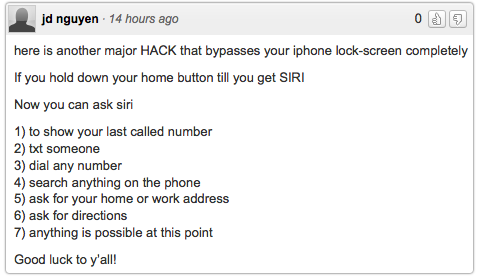California gives teenagers an ‘eraser button’ to delete their web mistakes
 Legislators in California are working to give teens more control over content they have posted on the web by giving them the ability to push the reset button on their social media profiles.
Legislators in California are working to give teens more control over content they have posted on the web by giving them the ability to push the reset button on their social media profiles.
California Governor, Jerry Brown, received a letter from the CEO of Common Sense Media, James P Steyer, in which it states:
Children and teens often self-reveal before they self-reflect and may post sensitive personal information about themselves – and about others – without realizing the consequences.
Now a unanimously passed Senate Bill will guarantee privacy rights for minors in California as well as an ‘eraser button’ which will allow them to delete their faux pas. This new bill will make the West Coast state the first in the US to require websites to allow under-18s to remove their own content from the site, as well as to make it clear how to do so.
The law does have some limitations though – it only covers content posted by the child making the removal request and so does not cover anything that their friends or family may have uploaded about them. The bill also only requires removal of information from public websites and not from servers.
California’s governor has yet to take a stance on the bill but, as reported in The New York Times, he has until mid-October to sign it, after which it will become law even without his signature. The new law would have an effective start date of January 1, 2015.
The law, designed to protect kids from bullying and embarrassment, also considers the potential harm to future educational or job prospects. This is timely considering how companies are increasingly likely to use the web to run background checks on prospective new employees.
In April this year, a survey by CareerBuilder discovered that 1 in 3 employers reject applicants based on unsavory social media posts. The kind of information that led to their decision included embarrassing photos, evidence of drink or drug use, and lack of good communication skills – i.e. just the type of profile many teens are presenting to the world.
Whether California’s new ‘eraser button’ will help kids bury their indiscretions and avoid having their youthful past determine their adult futures is debatable and Senate Bill 568 is not universally approved of. There is concern that it could lead to other States passing their own laws, thereby leading to a situation whereby website operators would have to navigate a multitude of legislation in order to serve content that may be consumed by minors.
In a letter to lawmakers the non-profit group, the Center for Democracy and Technology, who lobby for internet freedoms said,
We are principally concerned that this legal uncertainty for website operators will discourage them from developing content and services tailored to younger users, and will lead popular sites and services that may appeal to minors to prohibit minors from using their services.
And then there is the question of how a website operator would know they were serving content to a minor and in what state? Presumably that would involve asking for a site visitor’s age and location – someone better hold onto the privacy advocates’ collars!
Follow @Security_FAQs
Follow @NakedSecurity
Image of smartphone courtesy of Shutterstock.
Article source: http://feedproxy.google.com/~r/nakedsecurity/~3/lUqgMfzpczk/



 On Monday night, a very hush-hush Facebook tiptoed into testing an “Autofill with Facebook” feature – autofill your credit card information, that is – that it will begin rolling out to some users this week, according to
On Monday night, a very hush-hush Facebook tiptoed into testing an “Autofill with Facebook” feature – autofill your credit card information, that is – that it will begin rolling out to some users this week, according to  We really didn’t want to write another Apple iOS 7 story.
We really didn’t want to write another Apple iOS 7 story. But we didn’t want to enter a public wrangle with a concept we agree with strongly in principle.
But we didn’t want to enter a public wrangle with a concept we agree with strongly in principle.



